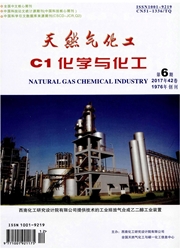

 中文摘要:
中文摘要:
降压法开采天然气水合物会受到储层传热的明显影响。降压联合井壁加热开采天然气水合物是将降压和热激两种方法综合使用,由此建立了天然气水合物降压联合井壁加热开采的数学模型,通过数值模拟手段对实验室尺度下的降压联合井壁加热法开采天然气水合物进行了模拟研究。模型得到了实验数据的较好验证。进一步的模拟结果表明:井壁加热能够给区域内提供热量并有效提高温度,有助于改善天然气水合物的产气,降压联合井壁加热开采方式下的产气优于纯降压开采情形。但同时由于传热方向和导热等限制,井壁加热的作用范围和对产气率的提高有限。不同井壁加热温度下的产气率变化较小,对产气率的影响几乎可以忽略。此外,联合开采方式下边界传热对天然气水合物的产气影响较大,可能影响此方法在低地热梯度环境下实际储藏的开采使用。
 英文摘要:
英文摘要:
The depressurization-induced natural gas hydrate dissociation is limited by heat transfer. This research presented a numerical study of gas production to clarify the dissociation characteristics of depressurization combined with well-wall heating. A 2D cylindrical fully coupled simulator was developed for simulating the laboratory-scale gas production process with depressurization combined with well-wall heating. The simulation results were verified by experimental data. Well-wall heating was beneficial to increasing gas production, and gas generation rate of the depressurization combined with well-wall heating method was higher than the depressurization method alone. Well-wall heating could improve the thermal conditions of hydrate-bearing sediments, but the influence was not large because heat was transmitted to only a small dissociation area due to small heating surface and slow heat conduction. On the other hand, the effect of different heating temperatures on gas production could be neglected. Finally, gas production depended strongly on the boundary thermal conditions. The depressurization combined with well-wall heating method may not be feasible for hydrate exploitation in a surrounding with a lower geo-temperature gradient.
 同期刊论文项目
同期刊论文项目
 同项目期刊论文
同项目期刊论文
 期刊信息
期刊信息
